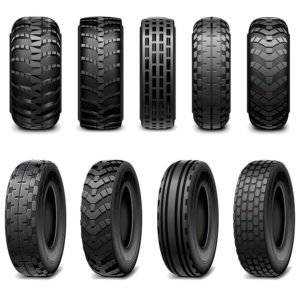Last Updated on 01.09.2025 by hrushetskyy
The Ultimate Guide in Buying Used Tires
Planning to change your tires soon? You may want to consider buying used tires instead. Whether you are tight on budget or planning to get rid of your old car and just need to hang onto it for a period of time, buying used tires is something you should consider. But whatever reason it may be, we, at United Tires deem it important to let you know the guidelines when buying a used tire.
Why should you buy used tires?
Buying used tires are environment friendly. About 290 million tires are discarded in the United States alone each year. With the help of reusing and with the latest technology, tires are being recycled. These methods recycle about 80% of the discarded amount freeing landfills and backyards of old tires.
Another reason to buy used tires is because it is budget friendly. Brand new tires can be costly not only because they are new, but also of their specifications. Understanding the used tire cost shows how much more affordable they are—often being sold for half the price of a new tire, if not less. Therefore, it does not matter whether you choose tires from large and well-known brands or less large, but no less quality, such as: Nankang, TreadWright or Pathfinder. You can rest assured that you can buy good tires at a bargain price.
Is buying used tires a good idea?

Buying used tires can be a great way to save money but not knowing which ones to buy can pose a great danger to you.
Some used tires can have punctures or breaks and patches which weakens the tire’s structure and performance. It is a great deal to be meticulous when choosing the tires to buy.
What is in a tire?
When a tire is cut in half, you can immediately see a metal cord which runs inside the diameter of the tire which is also responsible for sealing up against the rim.
Radial plies and steel belts are the internal structure of a tire. They are interwoven to give the tire strength, stiffness, and durability. Having these two components in a tire protects it from punctures and blowouts.
The sides of a tire are called side walls. Sidewalls are important in terms of performance and feel. They can be made soft or stiff depending on its specification. A stiffer sidewall provides more control and has a relatively faster turn-in response. Stiff sidewalls are usually snappy in nature making new drivers nervous on their first use. A tire with softer sidewalls give a smoother and more comfortable feel.
Tread blocks are found on the surface of the tire’s circumference. These chunks of rubber are responsible for traction. Different types of tires have different sizes and patterns of tread blocks. Large tread blocks have better traction, however, they tend to be noisy compared to smaller ones. Small and medium sized tread blocks are found on all-season and wet-performance-oriented tires.
Sipes are the slits in the tread blocks. They improve traction in wet and snowy weather by expanding once in contact with snow. This feature helps keep the snow or water off the tire’s tread which makes better grip.
Winter tires usually have thicker but soft tread blocks with deep sipes. Grooves are similar to sipes and have a similar function.
Used Tires Buying Guide

Treadwear tells you a lot about the vehicle and how the tires were treated.
A new all season tire has about 10/32” of tread depth. It gets slippery when your tire wears down to 4/32” and can become deadly if it goes down to 2/32” which is the maximum legal limit for a tire.
Most tires have built in wear bars in between treads which tells you when the depth of the thread is worn down for replacement.
How long a tire will last is determined by treadwear rating. Uniform Tire Quality Grade standards are used to determine the lifespan of your tire; however, manufacturers usually set their own treadwear ratings which makes the tread wear listings different in some tires.
How to measure tire’s tread gauge?
There are two ways. First, you can use a caliper or a tire gauge and measure the tire by placing the tool on the tire’s groove and it will automatically read the depth for you.
Second, you can use a penny or a quarter to measure the tire’s tread gauge buy inserting the coin in the grooves or between ribs making sure Lincoln’s head points downwards. If you can see a small part of Lincoln’s head buried in it, that means your tire has about 4/32 of an inch depth. This indicates that the tires are worn out but can still be used with the risk of slipping off the road on wet days. If you see Lincoln’s head completely, it means the tire is completely worn out and has maxed the legal limit of tread depth.
Look out for the following:
-
Tread Width
Check the tread width of a tire to make sure that it looks even. Sometimes tread width of used tires can be uneven because of how the vehicle was used when the tire was on. Getting an even width means your tires will have better traction as opposed to narrow ones.
-
Feathering
Run your hand back and forth on the tire’s circumference and make sure it is smooth. If some parts are smooth and other parts are catching, then that means the tire is feathering. Feathering occurs when the vehicle’s alignment is not even.
-
Cupping
Tire cupping occurs when there is inadequate suspension when the tire was on. Not only is it dangerous but also makes your ride very noisy. To check, run your hand across the tire treads and feel if there are bumps or waves on the tire. If so, then you have to reconsider this. Running on cupped tires may be dangerous if the depth of the tread is too shallow (4/32” is already considered worn out). However, if the tread is still thick enough, the tire will eventually smoothen out through
time.
-
Overall Tire Condition
Look out for tire deformities and repairs. Some tires have been pierced by a nail and patched up and some tires have threads sticking out. These things weaken the integrity of the tire.
Another thing to look out for are flat spots. Flat spots are formed when a car has been sitting for a while. Tires with flat spots are uneven and dangerous when used in wet or snowy weather as they may start to vibrate.
Lines on a tire’s tread indicates that the tires have been doing burnouts which is not good. Burnouts is done when a car is stationary and tires are being run to heat up and smoke. Burned out tires are likely to have less tread depth which you want to avoid.
Also check for cracks on both sides of the tire and on the treads. There are two kinds of cracks, a major crack and a minor crack. You will know a major crack when it affects the tire’s structure. Huge cracks on the sidewalls or cracks on the circumference are the things to watch out for.
Minor cracks are usually seen inside the treads which can be caused by the weather and age of the tire. Rubber tends to become brittle or dries up when exposed to harsh weather conditions and through time.
Wobbly tires should also be avoided because of the danger it may cause. You can check if a tire wobbles by rolling it on the road and starts to move in a weird way.
The Age of Your Tire
Feeling the sides of the tire and surface will tell you that the tire is old because the rubber is drying out. You may want to avoid tires that are 6 years and older because as the rubber dries out, the tire loses its traction and can easily slide on snow and wet roads.
One way to check your tire’s age is by locating the letters DOT on the side wall of your tire. The last four digits on the sequence represents the week and year it was manufactured. For example, if the numbers show 2090, this means the tire was manufactured on the 20th week of the year 1990. Normally, a tire can be used up to 6 years’ maximum. An old tire with good tread depth is considered junk because the drying rubber becomes slippery when used.
Type and Brand

Tires are made specifically for different seasons and types of vehicles. Tires used for family vehicles are usually all-season tires while pick up vans, and SUVs need light truck tires. Performance tires are used for specific car brands and types. And there are winter tires that have softer treads to have better traction on snow. Although winter tire treads are thick, they cannot be used all the time especially during the summer as the soft treads may wear out easily. If you’re considering secondhand options, following a used winter tire checklist is essential to make sure you get safe and reliable tires.
Performance tires usually have V grooves on them which make them great to use in the summer but never in the winter time because these tires will slide on snow. All-season tires usually come with new cars for their great comfort and fuel economy. This does not mean that they can be used in all seasons, however.
Tire brands really matter as well because they are made for a specific type of vehicle. Do stay away from cheap tires as they are usually made of inferior materials which wear out easily and turns out to be more expensive in time.
Size
Along with knowing the type of car you have, it is also essential to find out the size of your tire. Not knowing the size of your tires may lead to an unbalanced car. For example, one might be installing a larger tire in the right front wheel and a rather smaller one on the left. This alone can destroy your car’s suspension and also puts your safety on the line.
There are numbers on the bottom of your tire’s side walls. They indicate the width, aspect ratio, and construction of your tire. For example, a tire size of P215/65 R15 P tells you that your tire is specifically made for passenger type vehicles.
The numbers 215 will tell you the width of your tire which is measured in millimeters, meaning the tire width for this given size is 215 millimeters. Aspect ratio comes after the slash mark; in this case it is 65. This means the tire’s height from its cross-section is 65% of its width. In other words, as the aspect ratio goes up, the higher the sidewalls will be. The letter R in this tire’s measurement tells us about its construction. R stands for radial which refers to the layers that your tire has. The last two letters in this measurement tells the tire’s diameter, in this case is 15, which means the tire’s diameter is 15”.
Speed Rating
This tells you about the maximum speed capability of a tire. Often speed ratings are matched to the top speed capability of the vehicle. For example, a tire with an H-speed rating has a maximum speed capability of 130 mph or 210 km/h. Some manufacturers do not recommend exceeding legally posted speed limits.
Load Index
Part of the specifications of a tire is knowing it’s load index. This tells us how much weight a tire can handle when properly inflated. This can be found on the sidewalls of the tire which are translated in both kilograms and pounds. Most cars have a load index of 75-100. Obviously, a high indicated load index means higher load capacity. Knowing your car’s load index when changing your tire saves not only time but money as well.
Price
Considering all the aspects mentioned above, buying a used tire can be economical or not. Adding up the age and tread depth of the tire will tell you how long that tire will last. Some tires with 60% tread depth can last you about 3-5 years depending on use is a great deal, as well as buying a tire with matching rims. So it is up to you to see if the price of a used tire saves you money compared to buying a new one—and to know where to buy used tires that give you both quality and value.
Share the Knowledge
